#HealthTok: How brands can be the ethical influence on health TikTok
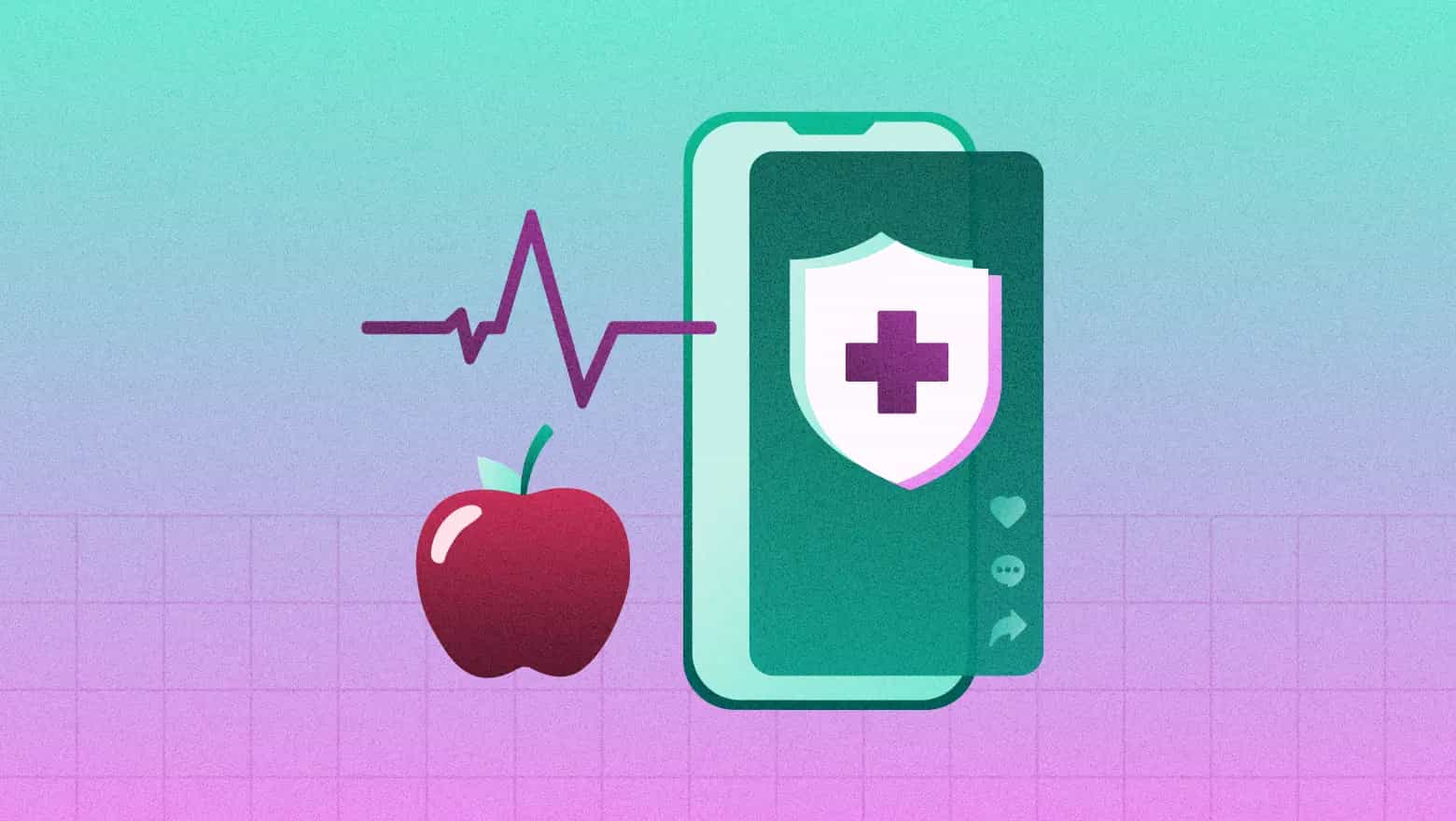
Table of Contents
In the middle of a daily TikTok scroll through videos of dancing, recipes, travel vlogs and makeup tutorials, you might find some game-changing (or questionable) health advice.
Doctor’s appointments aren’t something many people look forward to, so we search online for better ways to live a healthy life. Many of us are looking for ways to get better sleep, hit new goals at the gym or ultimately live longer, healthier lives. And HealthTok has stepped in to fill the gap, rapidly gaining influence as a source of wellness information on a huge range of topics.
While the proliferation of #HealthTok means more access to information, it also raises the risk of spreading misinformation. Health “tips” that are ineffective or worse, dangerous, can quickly spread on TikTok unchecked.
As a vehicle for educational health content, TikTok can reach billions of people. At its best, health TikTok can help more people understand the nuances of living their best, healthy lives. Medical professionals and brands play an important role in making that ideal vision happen. As experts, healthcare pros and wellness companies have a responsibility to create and share helpful, accurate content.
The world of HealthTok is vast, and there are spaces brands, doctors or certified specialists can speak to. Finding your niche within this community will enable you to join the conversation in a way that’s ethical and makes a positive difference.
Why TikTok matters to the healthcare industry
#HealthTok is a global community on TikTok that spans age groups and demographics. Users are getting advice from peers and influencers, some of which are healthcare professionals active on TikTok. More and more, HealthTok users are turning to the app for insight on their health instead of a doctor. A study by MyFitnessPal and Dublin City University found that 87% of Millennial and Gen Z TikTok users have turned to the app for help with a health issue instead of family or medical professionals.
Social media is becoming a search engine, especially among younger generations. Instead of searching for lifestyle and medical websites, people are turning to their social communities to seek advice.
“We know that the majority of people search for health information on social media, and that means it’s essential for physicians and medical experts to be present in the spaces where patients show up,” says Natalie Crawford, MD. As a fertility physician and board certified OB GYN and Reproductive Endocrinologist, she’s seen a gamut of misinformation about women’s health on TikTok. Yet, there are positives.
“The focus on health information on social media has helped many women become better advocates for their health and wellness, especially in the fertility space,” Dr. Crawford says. The community aspect of HealthTok plays a major role in empowering patients to better understand their health and speak up for themselves.
There are numerous individual health communities across the network. #MedicalTok has over 2.5 billion views according to Ogilvy. It’s made up of general health and wellness tips and information, as well as videos and discussions around specific conditions. People living with Type 1 diabetes (#T1Tok), POTS (#POTSTok, #POTS), cancer (#CancerTok) and a multitude of other illnesses also find camaraderie and support in this community.
HealthTok inserts community into the clinical, which is one of the reasons it’s such a draw to audiences. Living with certain conditions or struggling with your health in different phases of life can be isolating. TikTok and other social media channels create a way for people to connect, share personal experiences, get support and feel less alone. Niche communities like #HealthTok can be valuable for raising awareness about health conditions, helping more people find answers and appropriate treatment they may not have known existed.
But with a community this large, it’s difficult to review every bit of content thoroughly, leaving discernment up to users on the network who may not always have the access or understanding to pick apart every piece of information they see. This is where users want brands to step up and do more to dispel false statements. The Sprout Social Index ™ found that 93% of social media users want brands to do more than they are to combat misinformation.
Despite its risks, HealthTok isn’t going away. Healthcare brands and professionals need to prioritize listening to and interacting with this community to make it a safer space for their audience while also reaping the rewards for their business.
The health landscape on TikTok
Health TikTok is made up of thousands of hashtags that segment different niche groups around specific conditions, careers, interests and more. There are general hashtags like #HealthTok and #HealthTips; niche subgroups like #T1Tok for Type 1 Diabetes, #PCOS and #MentalHealth; and professional hashtags like #Doctors, #Nurses, #Dentists and #PhysicalTherapists. If it’s related to health and wellness, it likely has a hashtag and community behind it. In all of these spaces, peer-to-peer support, education and engagement thrive.
Unfortunately, misinformation and harmful health advice has found a home, too. At best, a HealthTok browser may come across a suggestion that’s simply ineffective, but at worst, they may implement a piece of advice that turns dangerous. Untested treatments, misuse of health products and unfounded advice have been known to go viral, risking public health.
But here in lies opportunity. Some medical professionals and wellness influencers have gained popularity from debunking these harmful “trends,” providing an authoritative voice of reason. Brands and health professionals on HealthTok have both an ethical and regulatory responsibility to be diligent about sharing correct information. While there are pros and cons of being a healthcare brand on social media, responsible brands that offer valuable health information can become trusted voices and boost their reputation.
Navigating ethical and regulatory concerns for HealthTok content
Health is often a touchy topic, and the community connection many find on HealthTok makes it a deeply personal space. Brands and content creators on HealthTok should understand the ethics of stepping into a vulnerable space where people are eager for answers and sometimes willing to take things at face value.
Transparency is critical: as a brand on HealthTok, make sure to openly share your qualifications, answer questions and back up your content with expert sources where possible. In highly regulated industries like healthcare, transparency is important to audiences and government entities.
Similar to marketers and banks on FinTok, brands and health professionals must adhere to regulations and guidelines that can vary by country. In the United States, for example, healthcare providers, plans and others must comply with HIPAA social media guidelines around patient information privacy. You should regularly review key guidelines to ensure your content is adhering to the most up-to-date policies. Including disclaimers on posts, moving conversations to DMs and encouraging users to consult their healthcare providers for personalized advice help frame what you share in the right context and protect patients.
Brands on HealthTok should also stay vigilant against misinformation on the network. According to a recent study with young women in the United States, only about 18% of participants verify a healthcare-related TikTok poster’s qualifications even though many respondents are aware of the proliferation of misinformation.
Abbey Sharp, registered dietitian, creator of @AbbeysKitchen, and host of Bite Back with Abbey Sharp podcast, sees a particular danger around nutrition topics due to misinformation on HealthTok. She notes that HealthTok is a “powerful, double-edged sword” in the nutrition space that “on one hand has democratized health information” but on the other, can feed extreme trends.
“As a dietitian, I see how HealthTok can reinforce diet culture under the guise of ‘wellness’ (pushing detox teas, restrictive ‘what I eat in a day’ videos or demonizing certain foods without context),” she says. “It can be incredibly triggering, especially for young, impressionable audiences. My hope is that we keep pushing for content that is both credible and compassionate. The algorithm may favor extremes, but real health lives in the grey area.”
Brands and medical professionals have an opportunity to proactively correct inaccuracies and promote evidence-based advice while clearly sharing their qualifications—and pushing others to do the same. Keeping tabs on HealthTok conversations via social listening can pinpoint opportunities for you to step in and clear up misconceptions.
How to listen in: Social listening and community insights
Social listening and mining community insights are foundational pieces of niche marketing in spaces like HealthTok. Some of the most valuable data comes directly from real time conversations of your audience in these niche areas. Here’s a brief guide to tapping the power of social listening for your healthcare marketing strategy on TikTok.
Monitor to understand common concerns and questions
There are endless hashtags and keywords you can track on health TikTok via posts and comment sections. Make a curated list based on your specific industry or specialty and explore the conversations happening around them. Where is the overlap between your selection of topics? What’s the tone of conversation like in posts that use these keywords?
TikTok’s influence isn’t limited to the network. We’ve all seen the news headlines and seen those reposts on Instagram. Viral TikTok trends migrate to Reels, Reddit and beyond. Monitoring these evolving trends and tapping into relevant conversations across networks keeps you ahead of the curve. Tools like Sprout’s AI-driven Social Media Listening enable you to unearth what matters most to your brand. You’re able to sift through thousands of social conversations in seconds by using specific keyword queries to cut through the noise and find actionable insights for your TikTok strategy.
Use TikTok as a real-time focus group
Once you understand the conversations happening, you can start crafting content directed at the needs of your audience. But as the conversation evolves, so should your strategy.
Gather feedback on your content and get deeper insight into the community by leveraging TikTok as a focus group. Consider testing out different content styles via A/B testing and see what is resonating best. Interact directly with your audience to stage your “focus group” by asking questions and prompting discussion. This approach will help your brand become part of the community while also gathering deeper insights.
On top of securing more engagement for your brand, this tactic enables you to hear directly from your audience to uncover what myths and trends are currently circulating that need verification.
Vaseline’s “Vaseline Verified” campaign is an example of approaching health myth-busting on TikTok in a way that resonates. Vaseline listened to their community and realized there were a number of harmful myths about their products circulating. This social listening tactic helped develop a campaign that dispelled myths and marketed the brand simultaneously. Based on what they discovered, Vaseline partnered with social media creators to launch videos debunking myths about their petroleum jelly product, and won a Cannes Lion.
Analyze engagement metrics
As you develop and share content for HealthTok, keep track of engagement metrics like views, shares and comments. Pinpoint the content that’s performing best and where you need to pivot.
This approach can also help you identify emerging health topics or interests starting to shape discussion. Use these insights to refine your content strategy as you go and address evolving (or unmet) needs in your audience. Content that performed well previously may see a dip as trends change, giving you an opportunity to try something new.
How to show up: Best practices for healthcare brands
Transparency, engagement and collaboration: the three elements of strong healthcare social media ROI. Let’s cover a handful of best practices to make sure your approach is optimized for the best outcome.
Be authentic
Reliability and authenticity are table stakes for brands on social media, but a genuine brand presence is all the more critical on #HealthTok. Users value transparent content that they can connect to. They’re on HealthTok to hopefully live as their best selves, and they want brands and creators to show up in a realistic but supportive way.
Offer education
HealthTok users want to learn and are eager to explore new perspectives. As a brand, you can fill this need by breaking down complex topics into bite-sized, engaging videos. For example, a nonprofit supporting people living with diabetes could create a video that quickly covers the top three lifestyle changes needed after being diagnosed. The more save-able and shareable your video content, the better. In this example, the American Heart Association created a visual guide to correctly doing CPR with an AED.
Engage the community
Beyond sharing your content, make sure to engage with your audience via comments, messages, shares and more. Answer questions that come up on yours and others’ posts, participate in “challenge” type trends and foster two-way conversations about health topics your brand knows best.
There are many doctors on TikTok who are great at engaging with the community by answering questions both informative and fun. For example, neurosurgeon Dr. Brian Hoeflinger often answers questions from his audience about tips for recognizing neurological conditions like strokes. He also replies to questions that offer a unique look at medical specialty training, like in the post below, where a follower wants to know if Dr. Hoeflinger would be able to perform a cardiac surgery.
Partner with influencers and medical professionals
Influencers on HealthTok include regular individuals with a passion for wellness, as well as healthcare professionals, medical specialists, nutritionists, surgeons, dietitians, trainers and more. As a brand, partnering with influencers who have a high caliber of health expertise and already built a loyal following will support your credibility. Collaborate with reputable health TikTok influencers in relevant niches to create high-quality content that boosts reach and counters misinformation.
Sharp recommends tapping health professionals with credentials when looking for a partner. “We are bound by our colleges to practice evidence-based care, and are therefore far less likely to spread information that can cause harm,” she explains.
Dr. Crawford also says brands should consider professionals first, and be prepared to approach them appropriately when exploring potential partnerships.
“Doctors and healthcare providers are experts and not influencers. Their medical opinion and support for a brand carries more weight than an influencer testimonial,” she explains. “Brands should understand rates are at a premium, since you are asking for a medical expert to give your product the seal of approval.”
Optimize for search
Your content doesn’t have to go viral to reach the right people on HealthTok. Make sure your posts are set up for success with specific hashtags (niche, location, etc.) and keyword-rich captions to boost discoverability. Include phrasing around specific health conditions, relevant HealthTok hashtags and use language that mirrors how your audience is talking about wellness topics.
Dr. Amira on TikTok showcased this approach in a partnership post with GoodRx. Her video explaining the differences between a psychologist and a psychiatrist featured strong keywords like mental health and hashtags like #psychology and #mentalhealthhelp.
TikTok health trends and the brands getting it right
Before creating your HealthTok video, take a cue from a few healthcare brands and creators hitting the right notes on some big trends.
Partnering with healthcare providers: Wellow
Compression socks aren’t just for your grandparents anymore, with younger crowds finding them useful for travel, athletic performance and support during long work days. Sock brand Wellow helped educate HealthTok users on how to properly wear and use compression socks through a partnership with Ohio Foot Doctors, a podiatrist’s office. Their sponsored video featured a demonstration and tips for getting the tight-fitting garments on easily. The partnership is a good example of partnering with reputable, local healthcare providers to build trust and ensure the advice isn’t harmful.
Remixing a viral trend: Holland & Barrett
When Dubai chocolate, a pistachio-filled concoction, exploded in popularity on TikTok, UK supplement brand Holland & Barrett saw an opportunity to showcase their healthy trail mix snacks. Users were obsessed with videos showing the chocolate’s pistachio center, and Holland & Barrett knew how to play into the trend uniquely. The brand posted a recipe video for the chocolate that added some health boosts including topping it with their trail mix. Capturing a relevant trend inserted their brand into the broader conversation, giving them a chance to add to it in a positive way.
Stitch reviews: DermDoctor Dr. Shah
Dr. Muneeb Shah, known as the DermDoctor on TikTok, is a board certified dermatologist passionate about educating his audiences on topics like dandruff treatment and sun protection. He frequently stitches videos from brands and other influencers where he reviews products, supplements and skin care suggestions.
His use of the green screen effect lets viewers see his real time reaction to claims made in the videos, and plays into the “talking head” style stitch trend on TikTok. In one example, he partnered with Garnier to discuss some ways people damage their hair and review Garnier products that may help. The video hits a trifecta of benefits: myth-busting, brand partnership and audience education.
Make a healthy impact for your audience
Becoming a part of the HealthTok community is a chance to raise your brand’s profile and do a bit of good, too. By keeping ethics at the forefront, your brand can help combat misinformation and improve your audience’s well-being and strengthen your brand’s identity as a valuable, expert resource in the health space.
HealthTok is just a piece of the larger healthcare social media landscape. Check out The 2025 Content Benchmarks Report for Healthcare for insights to inform a holistic social media strategy for your health or wellness brand


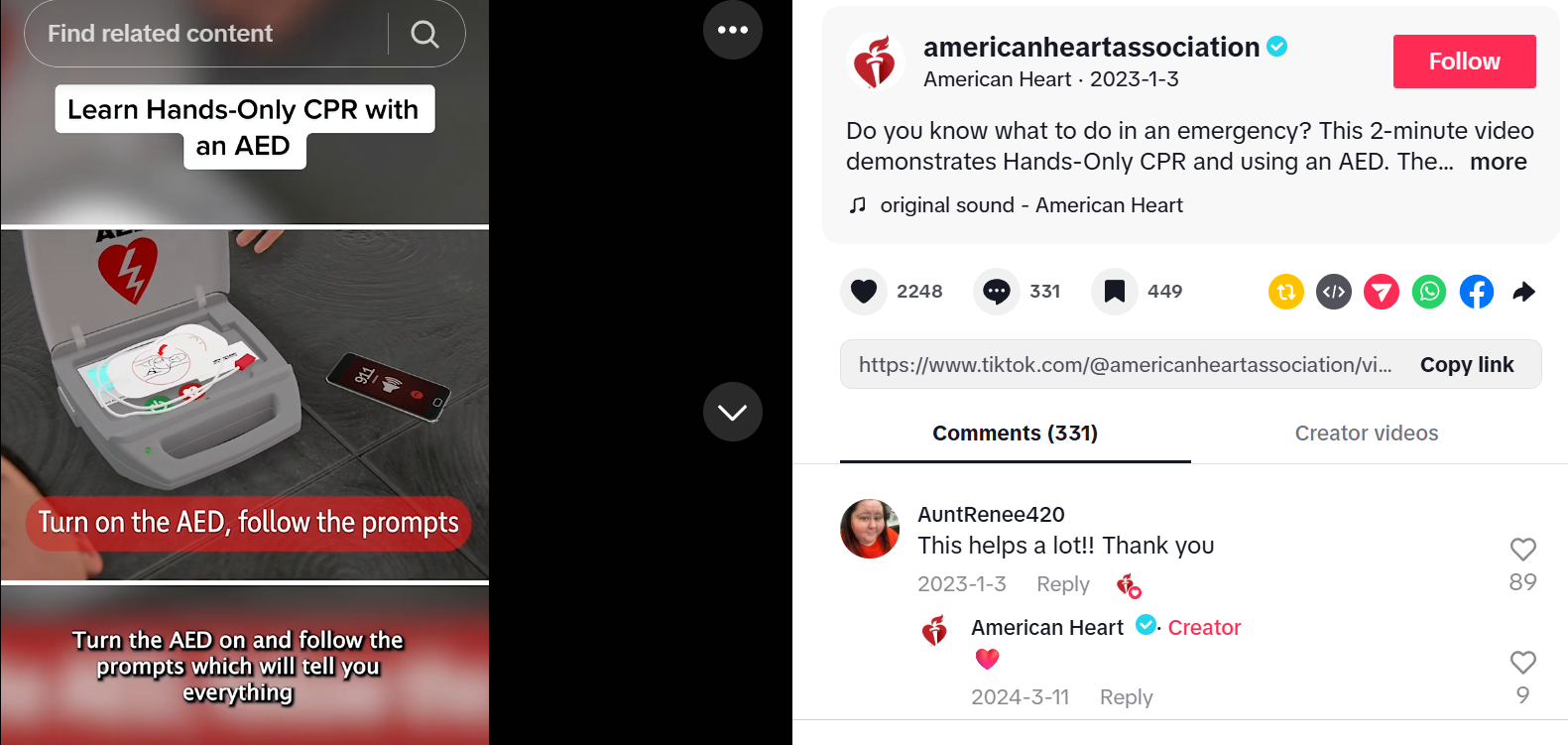
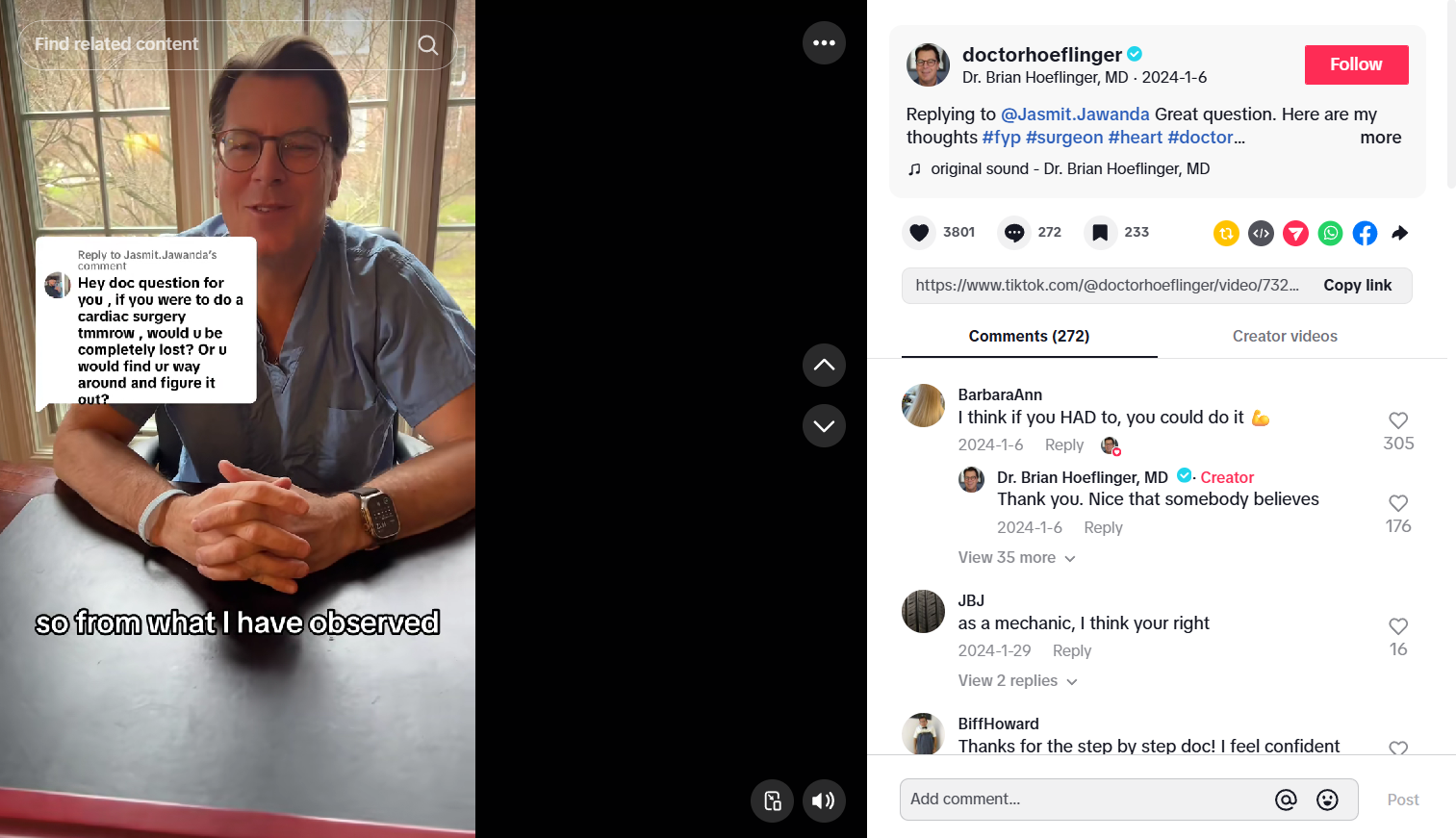
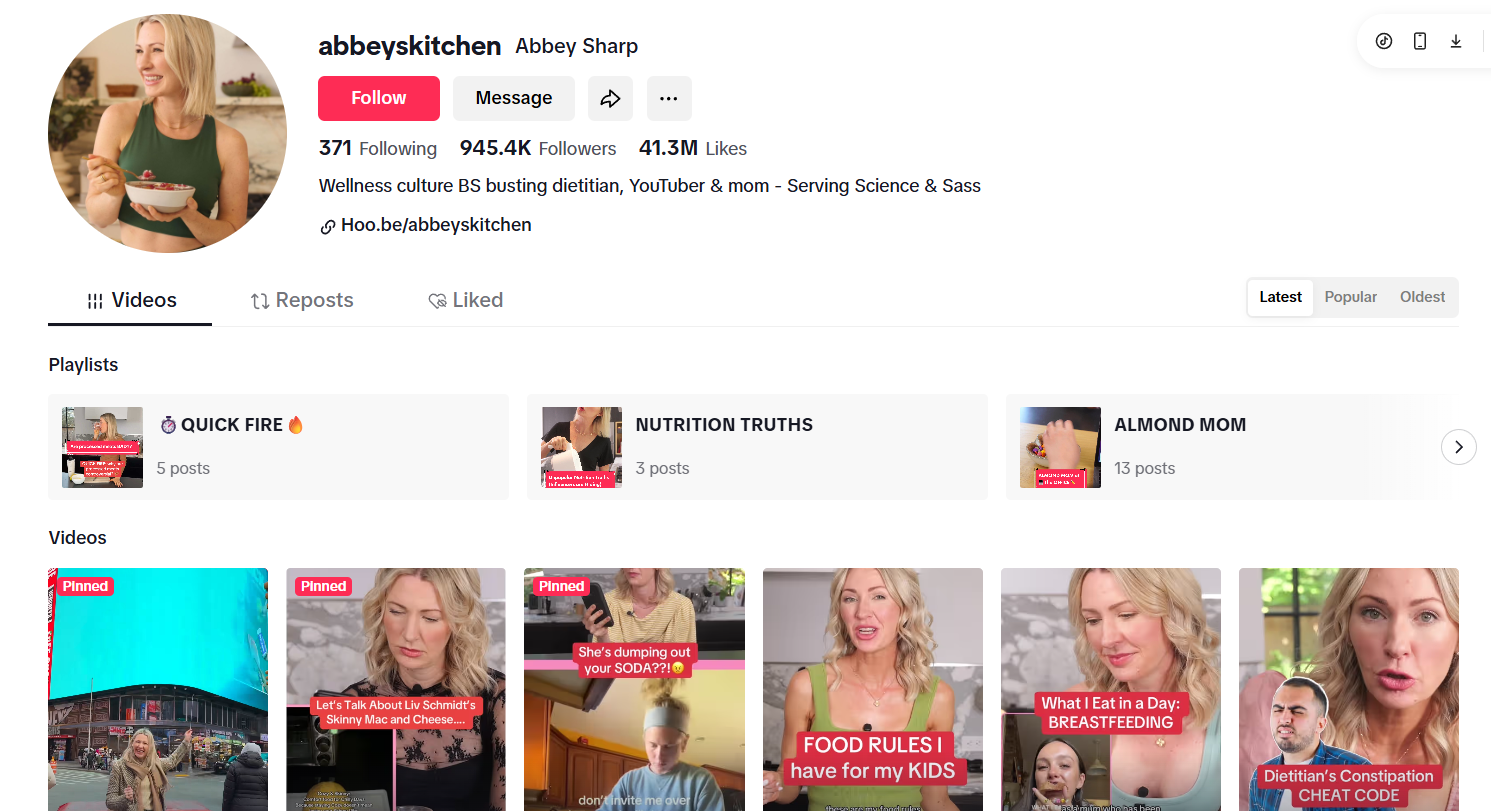
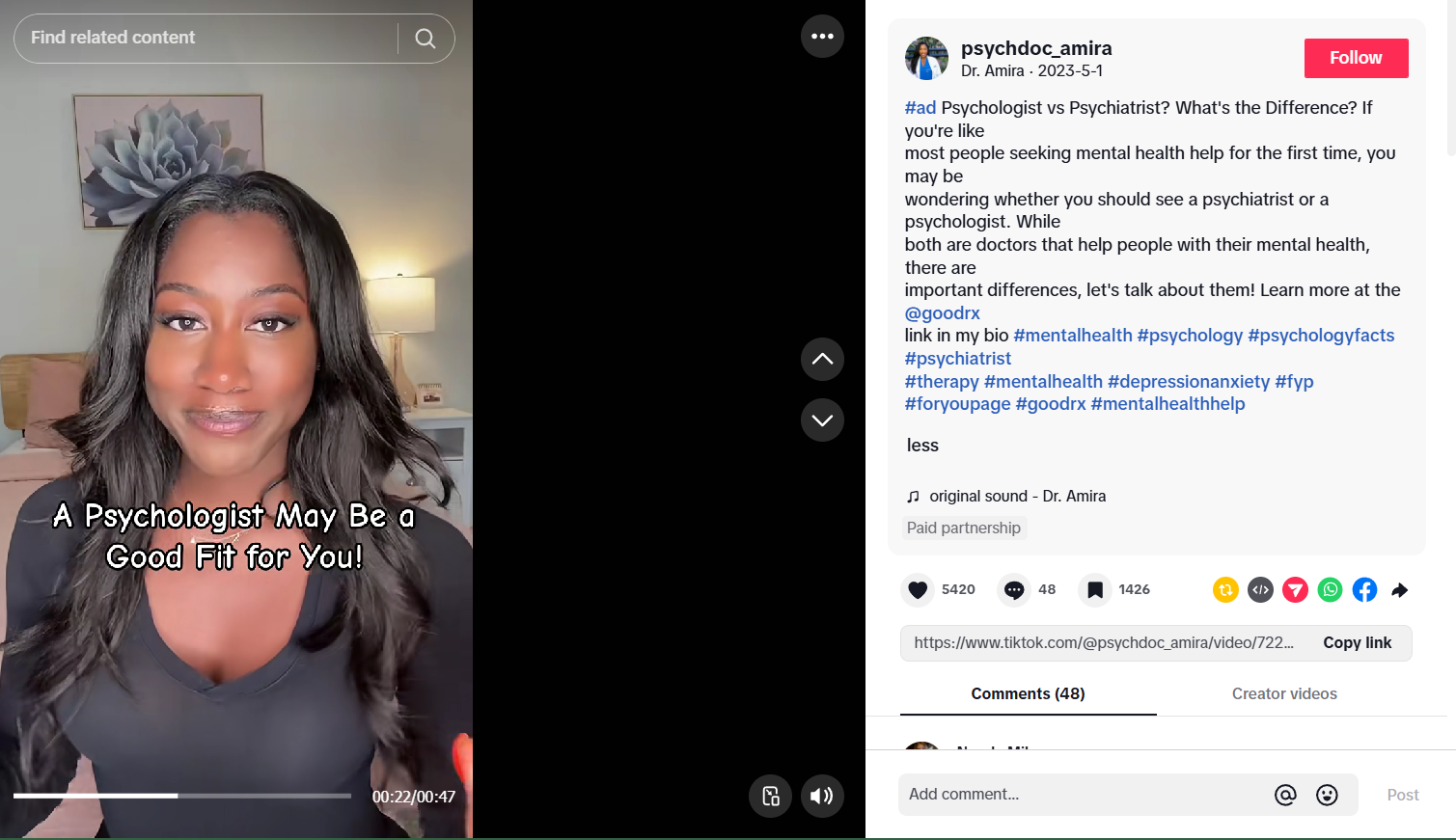
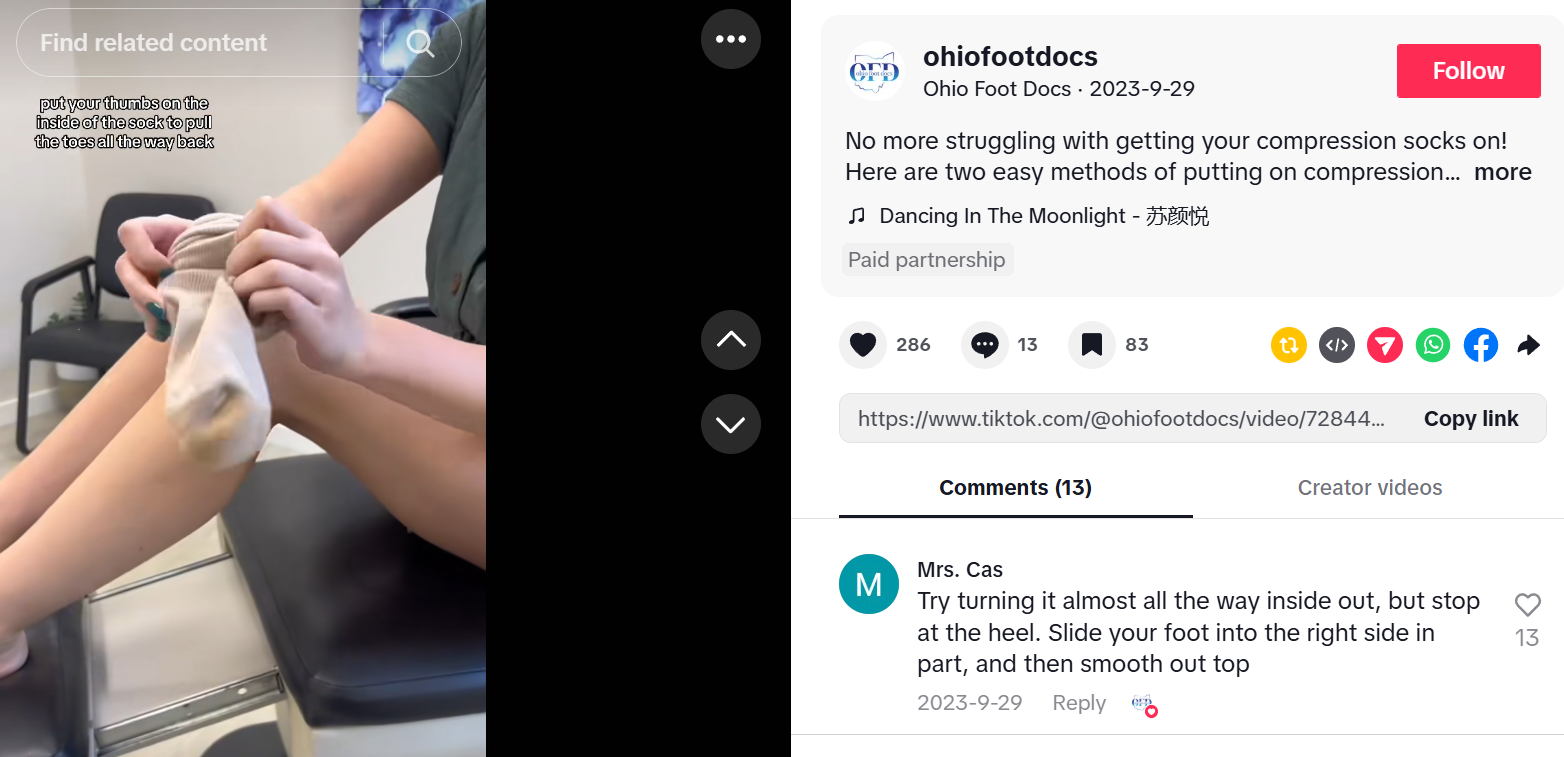
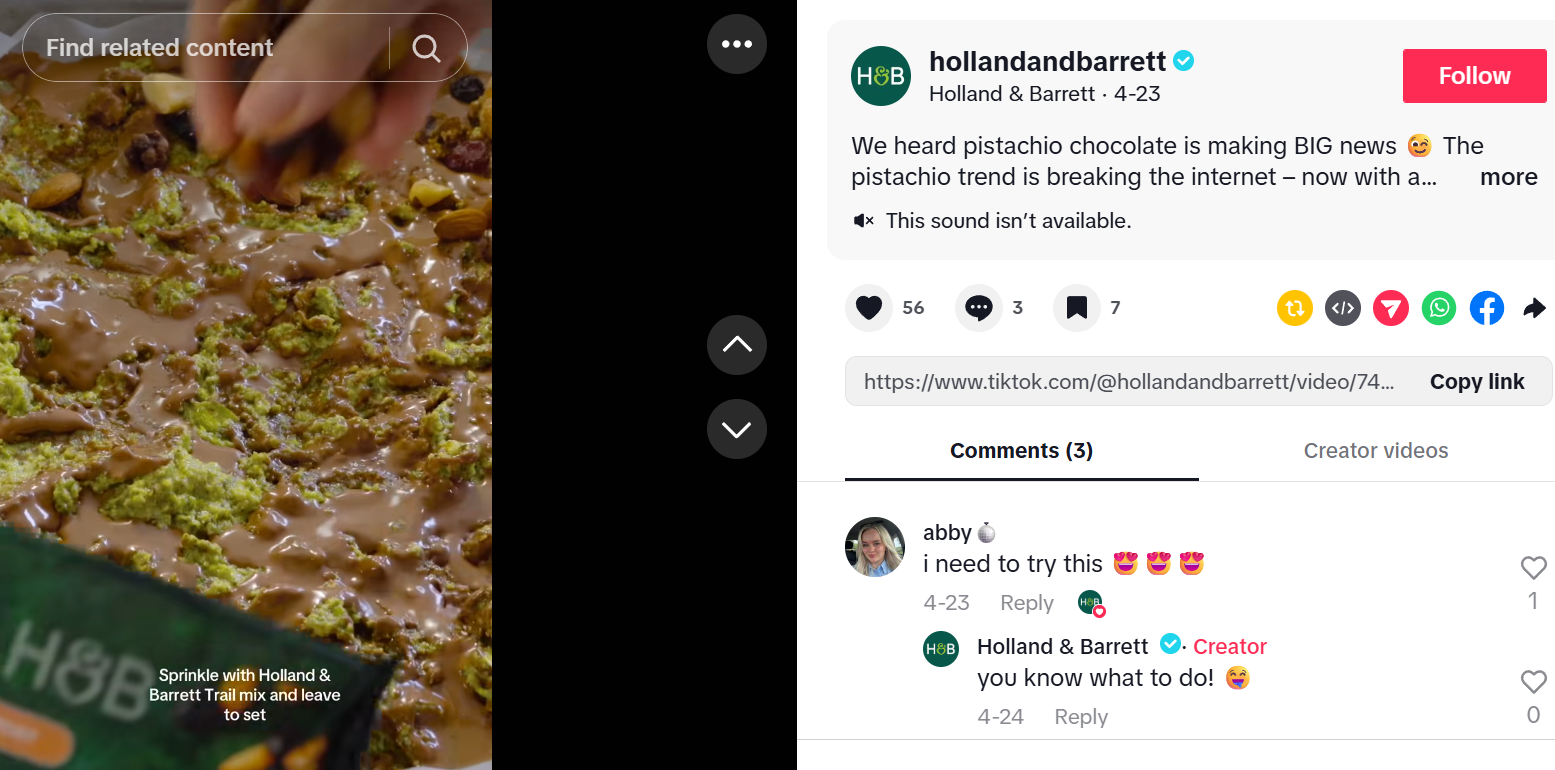
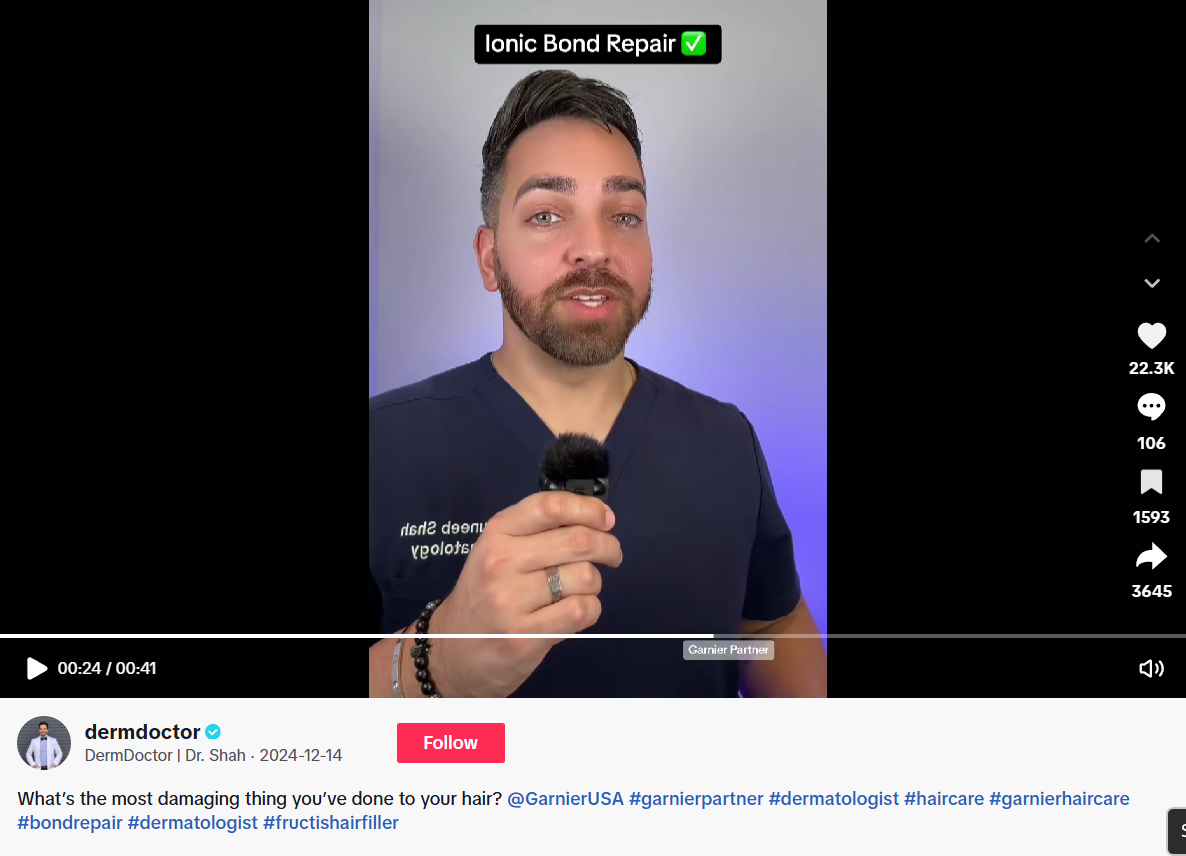

Share